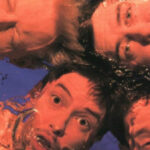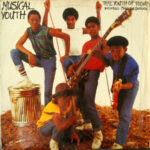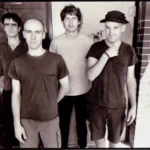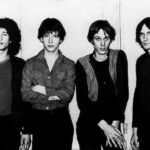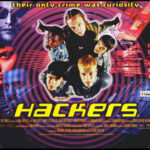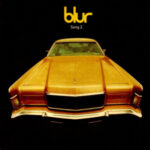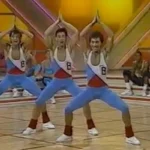 The 1980s were a decade defined by bold colors, big hair, and an unparalleled obsession with fitness. From Jane Fonda workout tapes to jazzercise classes, the fitness boom captivated a generation eager to sweat in neon spandex. Amid this craze, one event emerged as the ultimate celebration of aerobics culture: the Crystal Light National Aerobic Championship.
The 1980s were a decade defined by bold colors, big hair, and an unparalleled obsession with fitness. From Jane Fonda workout tapes to jazzercise classes, the fitness boom captivated a generation eager to sweat in neon spandex. Amid this craze, one event emerged as the ultimate celebration of aerobics culture: the Crystal Light National Aerobic Championship.
Held annually throughout the 1980s, this competition was more than a test of physical stamina—it was a dazzling spectacle of synchronized choreography, athleticism, and showmanship. The 1987 Crystal Light National Aerobic Championship is remembered as a quintessential moment in fitness history, encapsulating the high-energy spirit and over-the-top flair of its time.
In this article, we’ll delve into the background of the championship, its cultural significance, the unforgettable performances of 1987, and its lasting impact on fitness and entertainment.
The Rise of Aerobics in the 1980s
The aerobics boom of the 1980s can be traced back to the late 1960s, when Dr. Kenneth H. Cooper popularized the term in his groundbreaking book Aerobics. Focused on improving cardiovascular health through rhythmic exercise, Cooper’s ideas laid the foundation for a fitness revolution.
By the early 1980s, aerobics had evolved into a full-fledged cultural phenomenon. Influenced by the growing popularity of disco and dance culture, aerobic workouts incorporated high-energy music, choreographed routines, and an emphasis on fun. Figures like Jane Fonda, Richard Simmons, and Denise Austin became household names, inspiring millions to don leotards and leg warmers and join the movement.
Amid this surge of enthusiasm, competitive aerobics emerged as a new frontier. Combining athleticism, creativity, and theatrical flair, aerobic championships offered a platform for participants to showcase their skills—and for audiences to marvel at the spectacle.
The Crystal Light National Aerobic Championship: Origins and Format
Sponsored by Crystal Light, a low-calorie powdered drink mix synonymous with health-conscious lifestyles, the National Aerobic Championship was launched to capitalize on the aerobics craze. The event was designed to celebrate the best in aerobic fitness, offering a competitive edge to what was typically seen as a recreational activity.
The championship featured individual, mixed pairs, and team categories, with competitors judged on criteria such as:
- Aerobic Fitness: Strength, endurance, and cardiovascular capability.
- Choreography: Creativity and synchronization of movements.
- Presentation: Costumes, energy, and overall stage presence.
The competition began with regional qualifiers, culminating in a high-stakes national final. By the time of the 1987 championship, the event had gained widespread attention, becoming a televised extravaganza that captured the zeitgeist of the decade.
The 1987 Championship: A Show for the Ages
The 1987 Crystal Light National Aerobic Championship, held in Los Angeles, was a vibrant display of athleticism and artistry. The competition drew top contenders from across the United States, all eager to claim the title and bask in the national spotlight.
1. The Atmosphere
The championship was a sensory overload of neon costumes, pulsating music, and high-octane energy. Brightly colored spandex, headbands, and leg warmers dominated the stage, reflecting the era’s bold aesthetic. The audience, equally enthusiastic, clapped and cheered in sync with the routines, creating an electric atmosphere.
The event’s production values were equally over-the-top. Spotlights, fog machines, and dramatic camera angles enhanced the performances, making the competition as much a spectacle for television audiences as it was for those in attendance.
2. Memorable Performances
The routines at the 1987 championship were nothing short of breathtaking. Each performance combined elements of dance, gymnastics, and traditional aerobic exercise, choreographed to upbeat, synth-heavy music.
One standout routine featured a mixed pair who seamlessly blended acrobatic lifts with synchronized movements, their chemistry and athleticism earning thunderous applause. Meanwhile, team performances wowed the crowd with their precision and energy, showcasing the power of unity in motion.
The individual category was no less impressive. Competitors dazzled with their stamina and creativity, incorporating innovative moves that pushed the boundaries of aerobic choreography.
3. The Winners
The winners of the 1987 championship represented the pinnacle of aerobic fitness and artistry. Their routines embodied the event’s core values: discipline, enthusiasm, and an unapologetic love for movement. While the specifics of the champions’ names and performances are sometimes lost in the broader nostalgia for the event, their legacy lives on in the hearts of fitness enthusiasts.
The Cultural Significance of the Championship
The 1987 Crystal Light National Aerobic Championship was more than just a competition—it was a cultural touchstone that reflected and amplified the fitness trends of the time.
1. A Celebration of Health and Wellness
The championship promoted the idea that fitness could be fun and glamorous, inspiring viewers to embrace aerobic exercise as part of their lifestyle. The competitors, with their toned physiques and boundless energy, served as aspirational figures for a generation obsessed with health and wellness.
2. A Platform for Creativity
Unlike traditional sports, competitive aerobics blurred the lines between athleticism and artistry. The routines were as much about self-expression as they were about physical prowess, giving participants a chance to showcase their unique style and personality.
3. The Role of Television
Television played a crucial role in popularizing the championship and aerobics culture in general. The 1987 broadcast brought the competition into living rooms across America, introducing a wide audience to the world of competitive aerobics. The polished production and charismatic competitors made for compelling viewing, cementing the event’s status as a pop culture phenomenon.
Legacy and Impact
The Crystal Light National Aerobic Championship, and the 1987 event in particular, left an indelible mark on fitness and entertainment.
1. The Rise of Group Fitness Classes
The championship helped to popularize group fitness classes, which became a staple of gyms worldwide. The emphasis on choreography and camaraderie in aerobics routines translated seamlessly into classes that combined exercise with social interaction.
2. The Evolution of Competitive Fitness
While competitive aerobics eventually declined in popularity, its influence can be seen in modern fitness competitions like CrossFit and bodybuilding. These events share a similar emphasis on physical prowess, presentation, and the pursuit of excellence.
3. Nostalgia and Revival
Today, the 1987 Crystal Light National Aerobic Championship is remembered with fondness by fitness enthusiasts and pop culture aficionados. Its legacy lives on in nostalgic tributes, YouTube clips, and even parody videos that celebrate its vibrant spirit.
Conclusion: A Glittering Moment in Fitness History
The 1987 Crystal Light National Aerobic Championship was a dazzling showcase of athleticism, creativity, and cultural zeitgeist. It captured the essence of 1980s fitness culture, blending health, entertainment, and spectacle into a singular event that continues to fascinate and inspire.
While the aerobics boom of the 1980s has long since passed, the championship’s legacy endures as a reminder of a time when fitness was not just a pursuit but a performance. For anyone who loves the energy and optimism of the 1980s, the 1987 Crystal Light National Aerobic Championship stands as a shining example of the era’s unique charm.
This post has already been read 157 times!

